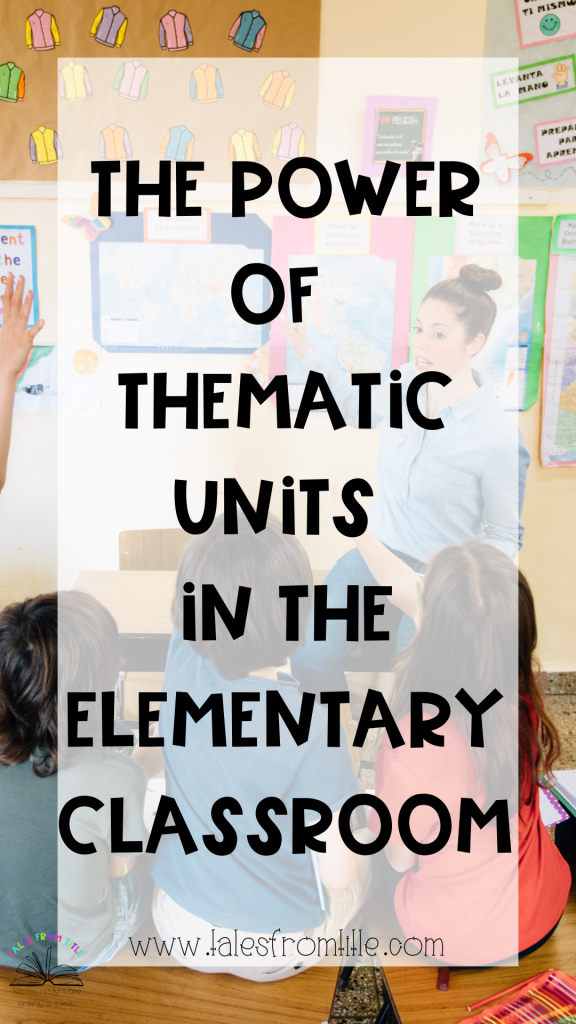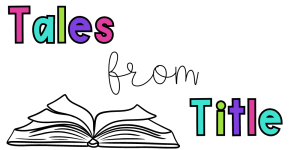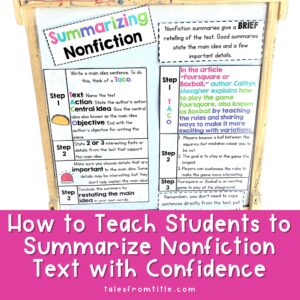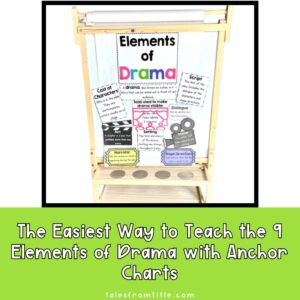Introduction:
Have you ever stopped and just mourned all the things that have vanished from schools and the education system, all in the relentless pursuit of higher math and reading test scores? Farewell to recess time, meaningful, real world projects, science, social studies, and holiday celebrations just to name a few. And what for? Scores are not improving and students are undeniably missing out on SO much!
This void in education has been a frequent topic of discussion between my teammate and me as we grapple with the challenge of filling the gaps our students bring to us each year. One thought we have had on numerous occasions is bringing back the thematic unit – think back to preschool days when a week was dedicated to exploring community helpers, weather, or outer space.
Now, you might be thinking, “Kristi, those are social studies and science topics.” And you aren’t wrong. However, does your school or district allocate sufficient time to teach science and social studies? The districts I’ve worked in don’t. Since I began teaching in 2011, I’ve taught science for two quarters and social studies for two quarters, but never both for the entire year. My daughters don’t get social studies at all, and science is squeezed in when possible or during their weekly STEM class. Because these subjects have been pushed to the back and forgotten, I argue that we need to bring back thematic units.
ThoughtCo. Defines a thematic unit as the organization of a curriculum around a central theme. Basically, it is a series of lessons that integrate subjects – math, reading, social studies, science, etc. – all tied into the theme of the unit.
Benefits of Thematic Units in the Elementary Classroom:
One of the greatest advantages of incorporating thematic units in your classroom is increased engagement. By choosing the units and planning the lessons, you can tailor them to the unique needs of your classroom and students. Embrace the diversity in your classroom, explore new cultures, and captivate unmotivated students by selecting topics that pique their interest. Create meaningful hands-on learning opportunities and connect your lessons to real-world experiences that students will encounter.
Another benefit of thematic learning is the ability to enhance student comprehension and foster critical thinking skills. Engaging students in thematic learning builds on their background knowledge, making it easier for them to read, understand, and retain information from texts in the future. Additionally, background knowledge on a topic enables students to make connections when reading texts related to what they’ve learned.
Vocabulary development is also a significant advantage of utilizing thematic units. Engaged in thematic learning, students are exposed to rich and varied vocabulary they might not encounter otherwise. The key is to incorporate this vocabulary frequently and meaningfully throughout the unit, ensuring that students carry it with them in the future. Aim for students to see and use these words in meaningful contexts, moving beyond mere memorization of definitions.

Incorporating Thematic Units into Reading Instruction
In an ideal world, educators and their students would have the freedom to choose themes and topics based solely on a passion for learning. However, in public education, a few considerations must be kept in mind. First and foremost, thematic units must align with curriculum standards. While standards provide a framework, there is still room for creative freedom, depending on your state’s standards. If your state has science and social studies standards, start there and build thematic units that incorporate reading, language arts, math, and technology.
Once you have units covering those standards, delve deeper. Survey your class to discover their interests and what they want to learn more about. Build units around these topics, incorporating their interests, cultures, and experiences to foster learning and mutual understanding.
As you embark on writing thematic units, ensure you target reading skills. Use vocabulary to focus on phonics and word recognition instruction. Include activities to help students become fluent readers who read with expression. Don’t forget to incorporate comprehension strategies. Thematic units provide an excellent opportunity to work on both fiction and nonfiction comprehension with a variety of texts that focus on your chosen theme. Make the unit unique by using poems, song lyrics, passages, and books to build student knowledge and support their reading comprehension. These units can also serve as platforms for students to conduct research, make presentations, write essays, or even record podcasts!

Overcoming Challenges:
Let’s be real, the idea of thematic units sounds amazing and wonderful, but it isn’t without its challenges. Let’s address the most significant one first—you might not be able to make thematic units work in your current position. Some schools provide teachers with creative freedom, while others have strict pacing guides and schedules to keep up with to appease higher-ups.
If you are in a position to utilize thematic units, address the unique needs of your students. Differentiate and provide intervention for those not meeting tier 1 goals. For students needing tier 2 support, easily incorporate the chosen topic into small groups. However, tier 3 students will still need research-based, systematic intervention to address their deficits, and that’s okay. Their entire day doesn’t have to revolve around the thematic unit. 🙂
Another obstacle to overcome is time management. How will you fit this into your day? Will it replace your entire ELA block? Do you have the freedom to build this unit into your plans for the entire day, or will you be trying to provide unique learning opportunities during small group instruction targeting specific skills? This decision depends on your district’s guidelines. Regardless, remember that whatever you provide your students in terms of thematic units—whether it’s a few small group lessons a week or a full three-week unit on the Winter Olympics—you are doing your best to provide meaningful learning opportunities!

Conclusion:
Designing and planning thematic units is undeniably a substantial task. However, you won’t regret the increased engagement, focus on critical thinking, and vocabulary development your students will gain. Acknowledge that obstacles may arise, such as limited time, lack of support from your school or district, and the challenge of meeting the needs of all learners. As you consider whether thematic units could work in your classroom, remember that you know what is best for your students. You have the ability to create engaging and impactful lessons!
Are you currently using thematic units in your classroom? What positives have you observed, and what drawbacks have you encountered? Share your thoughts in the comments below.






